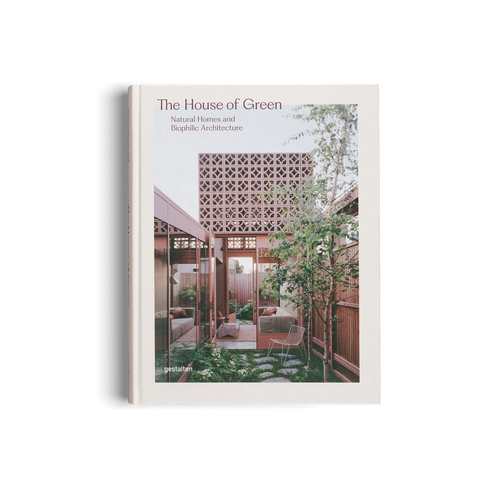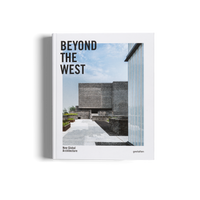
09/2020 architecture & interior
Today, architects around the world face an unprecedented series of challenges. Issues such as the rapid growth of populations, societal and political instability, and climate change present those working on the built environment with new levels of complexity. This impacts the myriad decisions that go into any architectural assignment: selecting materials and organizing labor, the use of space, and the interaction between a building and its surroundings.
Globalization brings faster and more streamlined knowledge-sharing and integrative solutions, but also the risk of standardization and homogenization. A particular truth in ever-expanding cities, where skyscrapers and high-tech construction systems define our image of what cities “should” be, dominating not only the skyline but the headlines and prevailing academic discourse. In this context, the progression of architecture continues to be shaped by an overtly Western perspective. Size, technological advancement, territorial dominance, material innovation, and engineering prowess are often privileged in the professional conversation, according to a Western idea of what constitutes progress. Even beyond these borders, in regions where colonization has marked the architectural landscape, systemization, and mass production—the pillars of our integrated international culture—threaten to neuter local knowledge and tradition.

Fernando and Humberto Campana, the siblings behind design studio Campana Brothers, are committed to using native materials and reviving traditional handicrafts in their practice. For a family home in São Paulo, they blurred the distinction between outside and inside using materials and techniques that maintain a continuous dialogue with nature, space, and natural light. (Photo: Leonardo Finotti, Beyond the West)
Architectural practitioners are, then, presented with a unique opportunity. Beyond satisfying the basic human need for shelter, the profession now has the potential to profoundly reshape the way we live in the 21st-century. The tools of the global economy—the powers of communication and production—equip designers and builders to make decisions that will affect our future livelihood and that of the planet. Our latest release Beyond the West explores the diversity of global architectural cultures and, in doing so, proves that this approach is possible, and indeed will flourish.
The book investigates architecture that challenges our current grasp of the discipline, looking beyond the Western world to discover alternative solutions to globally relevant issues such as sustainability, transport and migration, material innovation, and even wellness. It aims to uncover the architecture of regional cultures and unpack what localization can mean in a global context by investigating how regional social, cultural, and economic conditions can produce intuitive and original architectural strategies. Beyond the West looks to thriving practices and projects that are scarcely recognized in this sphere of architecture, we highlight what progress looks like in Asia, Africa, and the Americas, with a focus on vernacular applications. We discover how everyday needs are better met when approached from a place of authenticity—one that serves the requirements of a specific situation at a particular time.
Architecture must respond closely to its environment to resonate with the landscape around it and the people who use it. It benefits humans when attention is paid to local surroundings—to weather patterns, economic restrictions, and cultural traditions. That is not to say that Western ideas have no place outside of their borders. Our featured projects and architects do not work in blind isolation; they understand the benefits of a globally integrated world and utilize knowledge gleaned in other parts of the globe.

For Kuala Lumpur's Chempenai House, WHBC Architects created a green living approach in a concrete jungle. Mimicking the local ecosystem, the structure is designed to self-cool and enhance vegetation growth. (Photo: Ben Hosking, Beyond the West)
We also recognize and applaud the many projects in the West that adhere to principles of regionality, sustainability, and respect for context and environment. We have chosen, however, to place our focus outside the West, uncovering projects with a sensitivity to local strictures in countries such as Brazil, Burkina Faso, Vietnam, and elsewhere. A deep consideration for the local climate, resources, and cultures can initiate tremendous advances in the built environment.
The projects featured in the book—from a low-impact mountainside bungalow modeled on Sri Lankan watch huts to an isolated Namibian desert retreat inspired by the nest of a local bird—are examples of a careful, research-driven, and localized approach. In many cases, tradition and intuition are the driving forces behind the overall concept. Working with available materials and in harmony with the surrounding terrain, architects find inspiration in traditional knowledge and skills. Bricks, stones, or bamboo from the surrounding landscapes are made or cut by local hands, creating local employment, and instilling local pride. These are appropriate responses when challenges include transport logistics, limitations, and the availability of materials.

Art, nature, local materials, and traditional techniques coexist in this unconventional structure that resists the definition of “gallery” because it is entirely devoid of straight lines. SFER IK Museion by Roth Architecture is an interdisciplinary creative space in Tulum, Mexico. (Photo: Fernando Artigas, Beyond the West)
Many of the practices producing these trailblazing projects model new ways of thinking and working by their very make up. They often have younger and more gender-balanced workforces, and they employ open-ended, democratic decision-making processes with a distinctly contemporary and thoughtful working culture. This facilitates innovative and original problem-solving, and may, in time, contribute to a shift in mindset within the discipline as a whole.
Diversity and attentiveness to new voices are crucial for the development of contemporary architectural practices, just as localism and consideration for the environment are for individual projects. This book does not present a comprehensive list of localized architecture; instead, it offers an intriguing glimpse into this design category beyond Western borders, and we hope that it becomes a starting point for further exploration of these regions and the individual architects affecting change. Our goal is for the book to spark curiosity and encourage readers to explore the immense opportunities that arise when we cast our vision beyond the architectural cultures of Europe and North America.

The “New Andean Architecture” of Freddy Mamani has shaped the identity of El Alto in Bolivia, where the former bricklayer has fashioned over 60 buildings. Mamani’s “cholets” (a name combining “chalet” with “cholo,” a derogatory term for an indigenous person) are vibrantly colored edifices decorated in geometric acrylic paneling, glossy chrome, and reflective glass. (Photo: Tatewaki Nio, Beyond the West)
The featured projects offer solutions to some of the challenges facing our planet, and together they represent the possibility of a better future. The architects showcased, often working in response to rapid urban growth, climate change, and political and economic instability, have doggedly drawn on their training, the knowledge of their peers, and their intuition to develop unique local solutions. This grounded, curious approach should inspire other members of the profession. It is a local call to arms for an international industry.
Tracy Lynn Chemaly and Faye Robinson with an introduction to Beyond the West, our latest release exploring a global architecture movement linked to locality.














